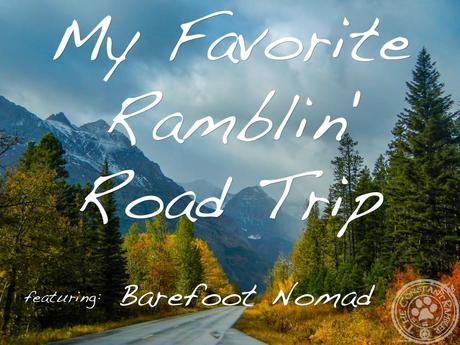
Growing up in the prairies of Central Canada, my family was no stranger to the road trip. Living in the middle of nowhere meant we had to pack a lunch to drive just about anywhere. That’s probably why when Micki and I had the chance to spend a few months in Spain and Portugal with our two kids that we chose to rent a car and go on a road trip rather than taking the train or hopping on a plane.
With a rough plan and a three week car rental we set off in a chocolate con churros haze from Madrid and headed north to Avila. The first thing we noticed about the Spanish countryside were the cranes. These huge birds routinely make their nests on the poles of the highest power lines and the kids loved seeing them awkwardly landing into their enormous nests. It turns out that watching for the nests became our favorite pastime as we crossed the country.
Once we reached Avila, we had a chance to walk the ancient walls and to see the sights in that old city. That first morning we awoke to light snow and freezing temperatures and though it was a chilly start to our trip, after a great breakfast we saw some great views and enjoyed the crystal clear blue skies.
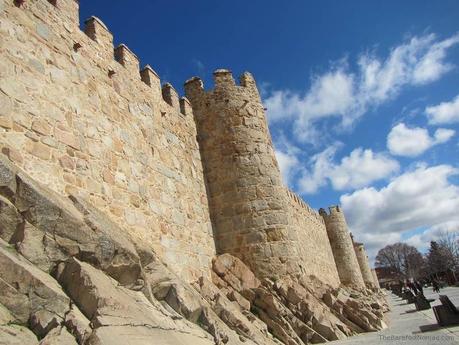
Walls of Avila, Spain
The most amazing thing to us about Avila wasn’t the giant walls or the ancient buildings, it was watching the locals still working within its confines. There were definitely more shops and people working in the center than we expected and when we noticed cars driving its narrow corridors, the juxtaposition of old and new was striking.
Next we arrived in the town of Salamanca. Salamanca is home to the oldest university in Spain (founded in 1134) and it’s also the fourth oldest in the world so we made sure we were within walking distance of the old center.

Walking up to San Esteban Convent
Walking its narrow alleyed roads and checking out the grand plazas gave us a deep appreciation for the architecture in that part of the city. It was still a little chilly when we got there, but the kids loved ducking into the old buildings to get out of the wind. The unexpected beauty within some of the old buildings hit home that traditions are still strong in Salamanca and the kids found more than one ancient hiding spot to play in.

Inside Courtyard Library
From Salamanca we left Spain behind and continued heading West to the ocean and the hilly city of Porto. Crossing the invisible border, the major roads in Portugal are new, wide, smooth and fast. Unfortunately, they also include a large amount of manned and unmanned toll roads that make it confusing for visitors.
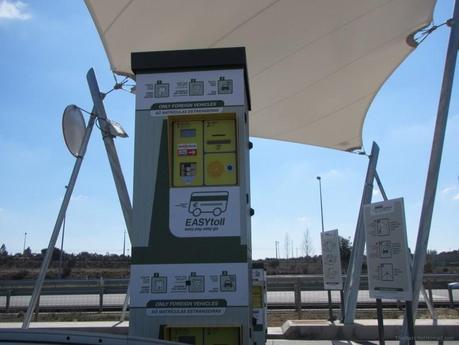
Portugal Tolls
Porto itself was a busy, hilly, gritty city and definitely different from the Spanish cities we had grown accustomed to. That being said, we loved it and definitely loved the area surrounding the Douro District. With amazing views, dozens of port sampling opportunities (yum) and a decent metro, we parked the car for a few days and truly enjoyed our time exploring the city and the river.

Boats on the Douro
The only negative experience we had there was being suckered into trying a local favorite, the Francesinha sandwich. The Francesinha is made with bread, fresh sausage, cured ham and steak or roast meat. It’s then covered with melted cheese and is then smothered in hot thick tomato and beer sauce. In a word, disgusting. In a lot of words, very, very disgusting.
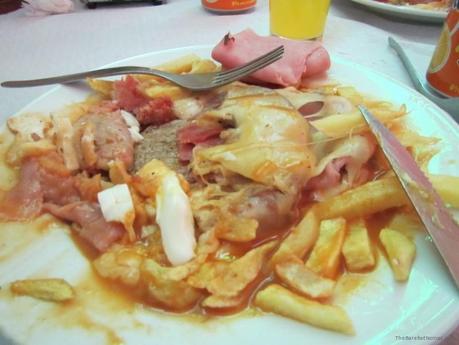
Francesinha Sandwich
After enjoying all Porto had to offer we made our way south down to the thriving Portugal capital of Lisbon. We managed to find a newer place to stay in the heart of ancient Bairro Alto (Lisbon is one of the oldest cities in the world) and again parked the car and made our way around the city via the old wooden tramcars or walking the decorative cobblestoned lanes.
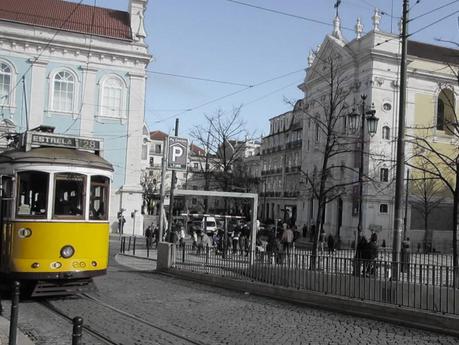
Lisbon’s #28 tram
Depending on the hour, the central streets of Lisbon changed appearance. In the mornings the city slept in, while bent old grandmothers walked the cobbled streets to pick up their morning groceries. As the morning turned into the afternoon, the streets came alive with everyone running about in a mad dash or gathering in random locations.
As late afternoon approached, the streets quieted down again as people headed home for a siesta or sat down in a cafe for a light snack and an espresso. As evening approached, the city came alive again as most Portuguese don’t eat dinner until 8 or 9 o’clock. At night, at least in Bairro Alto, the parties rage all night with masses of people walking the streets until the sun comes up.
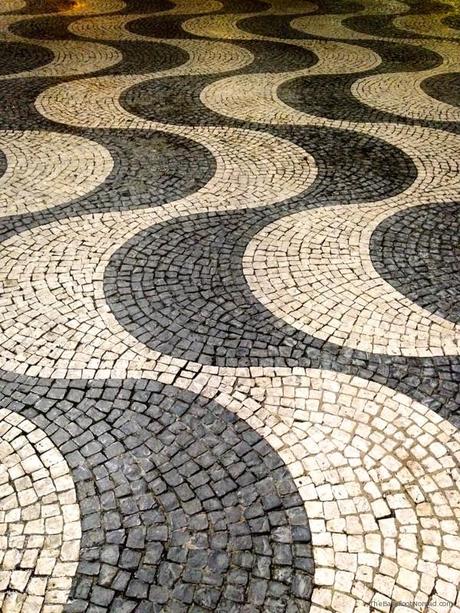
Tiles on the streets of Lisbon
Reluctantly leaving the deliciousness of the pastel de nata behind at Pasteis de Belem, we backtracked out to historical Sintra before continuing our journey South. Sintra Castle and its surroundings are an amazing jewel nestled in the luscious green hills and seemed far removed from the busyness of Lisbon. If the rain hadn’t chased us away we probably would have stayed in the Sintra area for a few extra days, but after checking out the sights we decided to make a beeline for the quiet solitude and off-season affordability of Sagres.
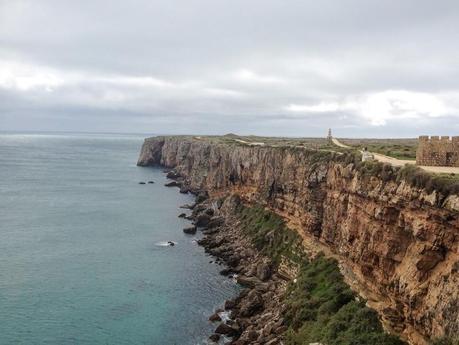
Cliffs at Sagres Point
This little town located at the most southwesterly point in Continental Europe was once lovingly known as the end of the world before Prince Henry the Navigator and others like Christopher Columbus braved the seas and ventured west. Besides for the gorgeous cliffs, a few forts and a smattering of fallen menhirs there wasn’t a lot to do in Sagres at that time of year. That suited us just fine and we spent a few quiet days relaxing and exploring the area before heading east.
No trip to Portugal is complete without spending some time in the touristy Algarve Region and we headed that way next. While there we had an opportunity to walk along its gorgeous beaches, sample some of its great restaurants and see what all the fuss is about. Since we weren’t there in the busy summer months, we only had a tiny sample of what the place had to offer, but based on the amount of rooms available, we’d expect it to be a really busy place in the summer.
